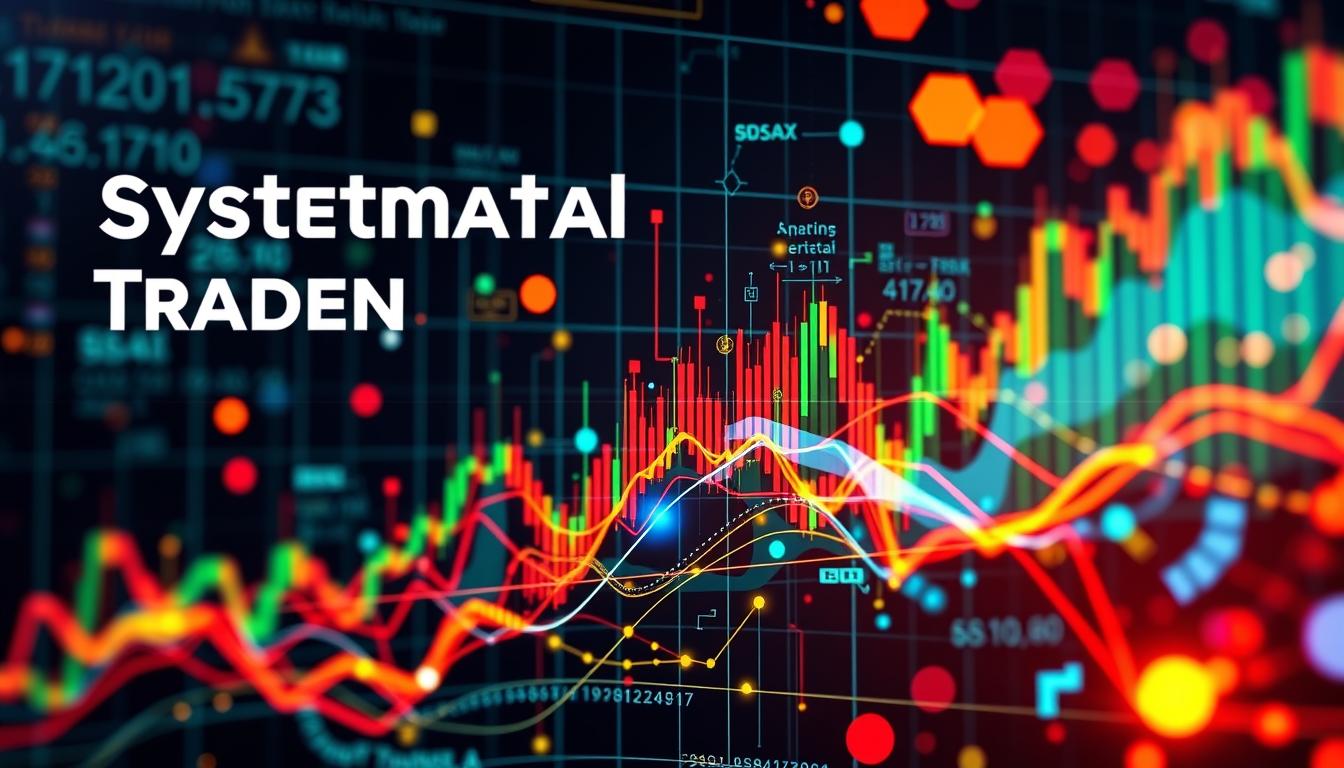In the ever-evolving world of financial markets, systematic trading methods (SMT) are steadily gaining prominence. Unlike traditional trading strategies that rely heavily on human judgment and intuition, systematic investing leverages pre-defined rules and advanced algorithms to make investment decisions. This modern approach to trading is transforming the landscape of the industry, offering precision, efficiency, and the potential for enhanced profitability.
At its core, SMT uses detailed quantitative models and sophisticated investment tools to automate and streamline trading processes. These models and tools are designed to analyze vast amounts of data, detect patterns, and execute trades with minimal human intervention. As the financial markets become increasingly complex, understanding the definition and importance of systematic investing becomes crucial for traders and investors looking to stay ahead.
Key Takeaways
- Systematic trading methods (SMT) rely on pre-defined rules and algorithms to execute trades.
- SMT enhances precision and efficiency in the trading process.
- Automated trading reduces the influence of human emotions and biases.
- Quantitative models are essential components of systematic investing.
- Understanding SMT is crucial for modern traders looking to navigate complex financial markets.
Understanding SMT: Definition and Importance
Understanding SMT is key to navigating modern trading systems. Systematic trading methods or SMT refer to strategies that leverage trading models and algorithms. These models enable traders to implement risk management techniques and make data-driven decisions devoid of emotional biases. Incorporating SMT into your investment approach can transform your trading journey.
Definition of SMT
So, what is an SMT in trading? It stands for Systematic Managed Trading. This approach employs quantitative techniques and mathematical models to scrutinize and act upon market signals. Unlike discretionary methods, SMT utilizes algorithms that scan and analyze market variables consistently. These trading models are pivotal for ensuring that every trade follows a pre-determined set of rules, which significantly minimizes human error.
Importance of SMT in Modern Trading
The relevance of SMT can’t be overstated as it empowers you to streamline trading processes and boost efficiency. Modern trading thrives on speed and accuracy, elements at the core of systematic trading methods. By integrating SMT, you enhance your ability to use powerful investment methods that are backed by rigorous analysis. This not only elevates your trading experience but provides a solid framework for long-term success. In today’s high-paced trading ecosystems, adopting SMT aligns you with cutting-edge technologies, ensuring your strategies are both resilient and scalable.
Incorporating systematic methods in your trading systems offers unparalleled advantages. Whether you’re a seasoned trader or new to the markets, embracing SMT helps you achieve consistency and mitigate risks effectively.
Components of Systematic Trading Methods
Understanding the components of Systematic Trading Methods (STM) is essential for anyone looking to delve into algorithmic trading, quantitative trading, and overall market analysis. These components form the backbone of modern financial maneuvers, shaping the ways trades are executed and investments are analyzed.
Algorithmic Trading Processes
In the realm of STM, algorithmic trading processes are paramount. These processes use complex algorithms designed to execute trades automatically and efficiently. By taking human emotion out of the equation, you can achieve faster and more accurate trading decisions. This method leverages mathematical models and statistical techniques to parse through massive data sets, optimizing trade execution and reducing market impact.
Quantitative Trading Models
The next critical component is quantitative trading models. These models rely on mathematical computations and statistical methods to perform market analysis and enhance decision-making processes. By employing quantitative techniques, traders can identify patterns and trends that are not immediately apparent, leading to more informed and strategic investments.
Investment Tools and Technologies
Of course, no discussion of STM would be complete without mentioning investment tools and technologies. The contemporary trading environment is rich with advanced software and platforms such as MetaTrader and Reuters Eikon, which facilitate rigorous market analysis and sharper decision-making. These tools not only provide real-time data but also offer algorithmic trading capabilities, thereby empowering traders to optimize their strategies continuously.

| Component | Purpose |
|---|---|
| Algorithmic Trading | Automates trade execution and enhances speed and accuracy. |
| Quantitative Trading | Uses mathematical models for detailed market analysis. |
| Investment Tools | Provides advanced software for real-time data and trading optimization. |
What Is an SMT in Trading?
Systematic trading methods (SMTs) are an essential aspect of modern financial strategies, providing traders with a structured and methodical approach to the market. These trading systems rely on mathematical algorithms and data analytics to generate consistent and objective trading signals, reducing the emotional bias that often accompanies discretionary trading.
Understanding the ins and outs of SMTs can significantly enhance your trading performance. These systems are designed to align with your financial goals, employing quantitative models to predict market trends and execute trades with precision. By leveraging historical data and statistical analysis, systematic trading methods can offer a competitive edge and facilitate disciplined trading practices.
The implementation of such trading systems allows traders to efficiently manage portfolios, diversify asset allocation, and mitigate risks. As an integral part of advanced financial strategies, SMTs incorporate a variety of algorithmic processes, tailored to align with individual investment objectives and risk tolerance levels.
Here is a detailed comparison of key features of systematic trading methods:
| Feature | Description | Benefit |
|---|---|---|
| Algorithmic Precision | Utilizes mathematical models to execute trades | Increases accuracy and minimizes errors |
| Data-Driven Decisions | Relies on historical data and statistical analysis | Enhances informed decision-making |
| Risk Management | Incorporates risk mitigation techniques | Reduces potential losses and manages capital effectively |
| Consistent Execution | Follows predefined rules and strategies | Ensures disciplined and objective trading |
| Performance Optimization | Adapts to market conditions with real-time data | Continuously improves trading outcomes |
By integrating systematic trading methods into your financial strategies, you can achieve a harmonious balance between risk and reward, maximizing your potential for successful trading outcomes. It is a pivotal step towards managing your investments with precision and foresight, ensuring that your trading systems remain robust and adaptive in the ever-evolving financial landscape.
Benefits of Systematic Trading Methods
Utilizing systematic trading methods brings a myriad of trading advantages that can elevate your stock trading experience to new heights. One of the most compelling benefits is the elimination of emotional decision-making. By relying on predefined rules and algorithms, you steer clear of impulsive choices that often lead to financial loss.

Another significant advantage is the capability to backtest. This allows you to test your strategies against historical data, providing a clearer forecast of potential outcomes. Backtesting not only boosts confidence but also confirms the reliability of your trading methods.
Consistency is key when it comes to systematic investing. Following a structured approach ensures that you apply the same strategy uniformly, mitigating the impact of market volatility on your portfolio. This disciplined investment path enhances the potential for financial success significantly.
Real-world examples show the immense potential of systematic trading. For instance, hedge funds frequently use algorithmic trading to achieve superior returns. This method leverages speed and precision to capitalize on market opportunities, setting a benchmark for aspiring traders.
| Benefit | Description |
|---|---|
| Emotional Elimination | Avoid impulsive decisions by sticking to predefined rules. |
| Backtesting Capabilities | Test strategies with historical data for better reliability. |
| Consistency | Apply strategies uniformly to reduce market volatility impact. |
| Enhanced Returns | Employ algorithmic methods for superior financial outcomes. |
By integrating systematic trading methods into your practice, you can leverage these powerful trading advantages to pursue financial success. Whether you are an individual trader or part of a large financial institution, systematic investing offers a path toward achieving your financial goals with greater precision and reliability.
Conclusion
Systematic Trading Methods (SMT) present a transformative approach in the realm of modern trading, offering a structured and data-driven path to success. By understanding the core components of SMT, including algorithmic trading processes, quantitative trading models, and advanced investment tools, you gain the ability to make informed decisions rooted in statistical analysis rather than emotion.
In today’s competitive stock market, leveraging SMT can be your gateway to achieving consistent investment success. These methods allow you to harness the power of technology and sophisticated financial strategies to navigate the complexities of trading. As markets continue to evolve, the significance of implementing systematic methods cannot be overstated.
Ultimately, adopting SMT in trading equips you with a robust framework for making calculated investments. It defines a solid foundation on which to build your trading endeavors, potentially leading to higher returns and minimized risks. As you explore these systematic techniques further, you’ll find that they elevate your trading practice, positioning you for greater financial success in the dynamic stock market landscape.

